what we have in common
where we are born,
what faith we follow,
whether we are rich or poor,
there is one thing we all
share equally.

It's time we sent human rights back to school. Not just for a while, in a single classroom
or as one part of the curriculum. But as an ever present influence that transforms the lives
of everyone involved in school life.
When human rights come into class, onto the playground and into the hearts and minds of young people, attitudes and behaviours begin to change. As children, teachers and others present in school explore,
promote, and live human rights and responsibilities, a collective conscience naturally develops.
The values and principles of human rights start to direct the thoughts and actions write my essay of the school community.
With human rights as an instinctive frame of reference, inclusion, tolerance, and respect for diversity enter into school life, leaving little room for bullying and discrimination.
That's how our human connection deepens, widens and gets cemented. We begin to relate to each other not as rich or poor, dark or fair, passed or failed, but as human beings made equal by the rights we share. Knowing this, makes us act... speak out and stand up for our rights and respect the rights of others.

To read about
the ten global principles of human rights
click here
Recognise and Respect each other's Rights and Responsibilities.

what is a human rights
approach to education?
A Human Rights approach to education assures every adult and child their internationally recognised human rights. It is an approach that brings those rights into school education so that they become second nature to all those who experience it.
Imagine a learning environment where human rights and responsibilities lie at the very heart of school life. Where everything said and done is unconsciously filtered through human rights. Where human rights values are not just spoken about but actually practiced. In such a school, real change is possible. From such a school, a rights respecting generation is bound to arise.
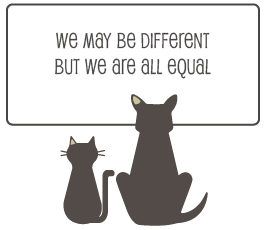
What do they mean?
Can learning about them
change our lives?

Practice makes perfect, right? Try being
inclusive, participatory, democratic and
see the difference it makes.

we stand up for our rights and
those of others. That's when
real change can happen.
why is human rights education important?
Human Rights Education (HRE) gives schools a shared language of equality, non-discrimination, inclusion, respect, dignity and participation. It upholds the fundamental rights of every individual and brings us closer to becoming a rights respecting, global family.
Human rights provide a valuable framework for good inter-personal relations and for making balanced, informed choices. It provides us with the skills necessary to work with each other, across differences, in order to address the global and local challenges of our times. Be it speaking up for issues such as violence against women, questioning government action or practicing citizenship on a day to day level...it all begins when human rights go back to school.
how can human rights education transform a school



A Human Rights Friendly School is where human rights are learned, taught, practiced, respected, protected and promoted. Through a whole school approach, 'human rights friendliness'
spreads into every area of school life.
A school that is 'friendly' to human rights is one in which all are included yet every individual is unique. It is a place where human rights values are nurtured in via the school curriculum, through relationships, within the school environment and in the way the school is governed. When human rights spread through school life so completely, attitudes and behaviours are bound to change.
Reports from human rights friendly schools around the world are very encouraging. Almost all schools have registered a reduction in disciplinary measures, an increase in attendance, positive shifts in classroom/playground relationships, and better peer/social interaction.
Now, that's hugely transformative, wouldn't you say?

To read about the whole school approach
and the four areas of school life
click here

benefits of becoming
a human rights friendly school




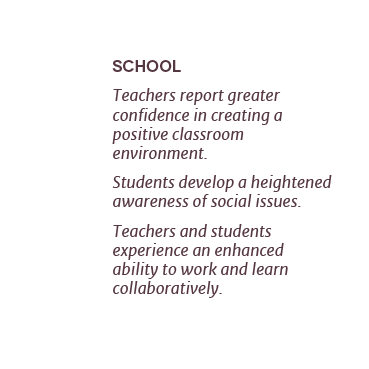
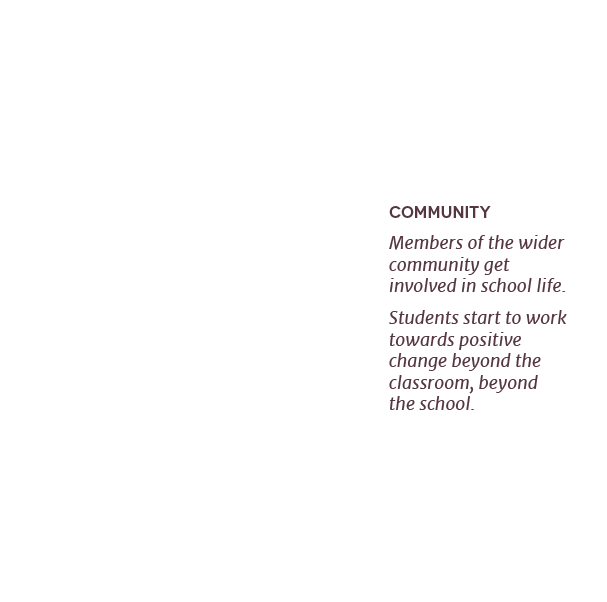

From a school to a movement. The first and perhaps most significant circle of influence in creating a rights respecting world is the Human Rights Friendly School. In this learning environment, education is channeled through human rights values and principles.
A Human Rights Friendly School is an empowering place where teaching replaces instruction, shared reponsibility replaces authority, guidelines replace rules. At such a school, teachers find it easier, and more enjoyable to teach because students tend to be more receptive. Students too enjoy the learning process because they feel empowered and secure to inquire, express their opinions and stand up for what they think is right. As Human Rights Friendly Schools send into the world, individuals who have an inbuilt understanding of living through the principles of human rights, wider circles of influence ripple out.






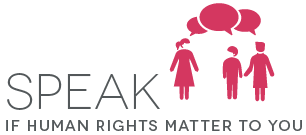

























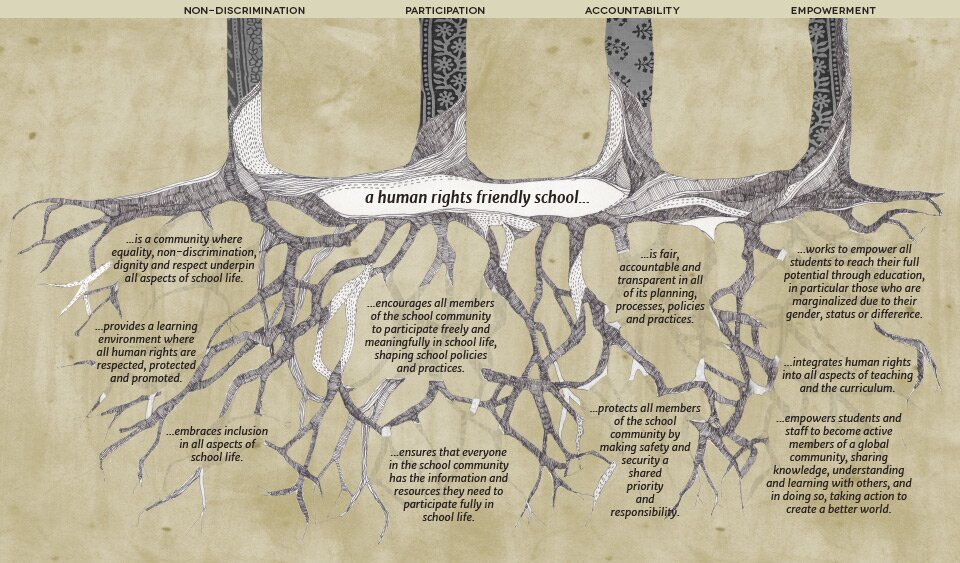
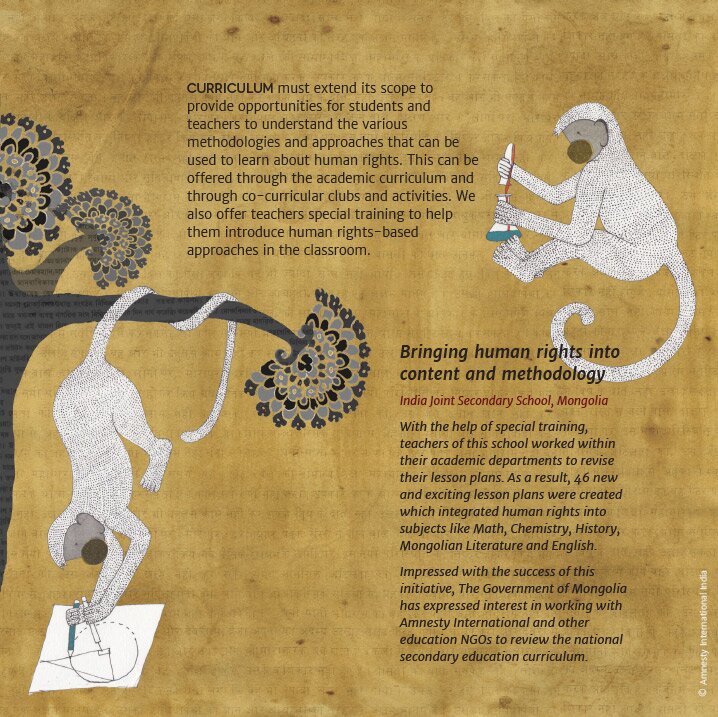
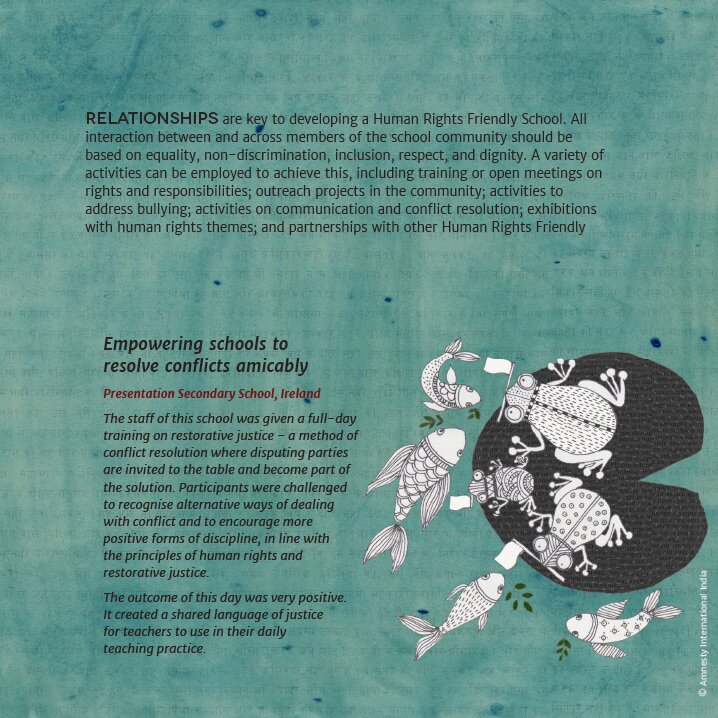
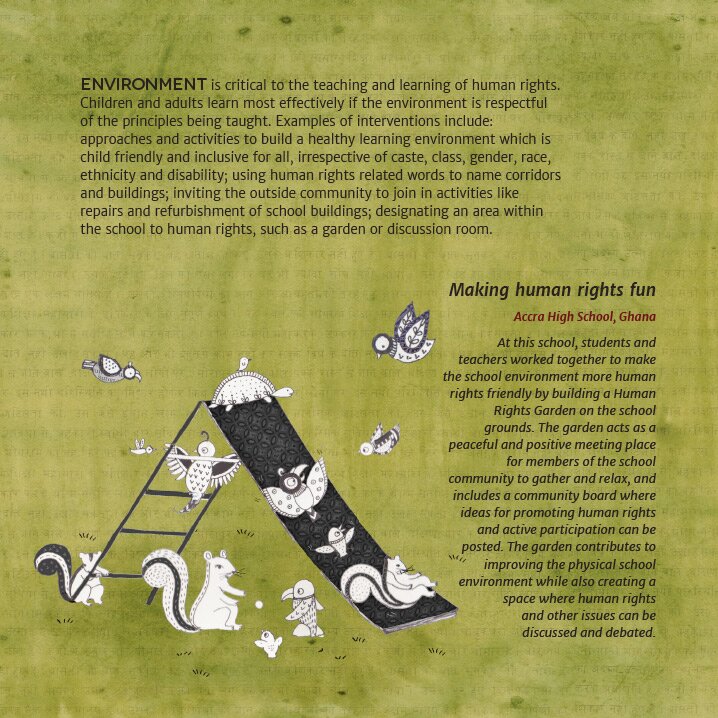
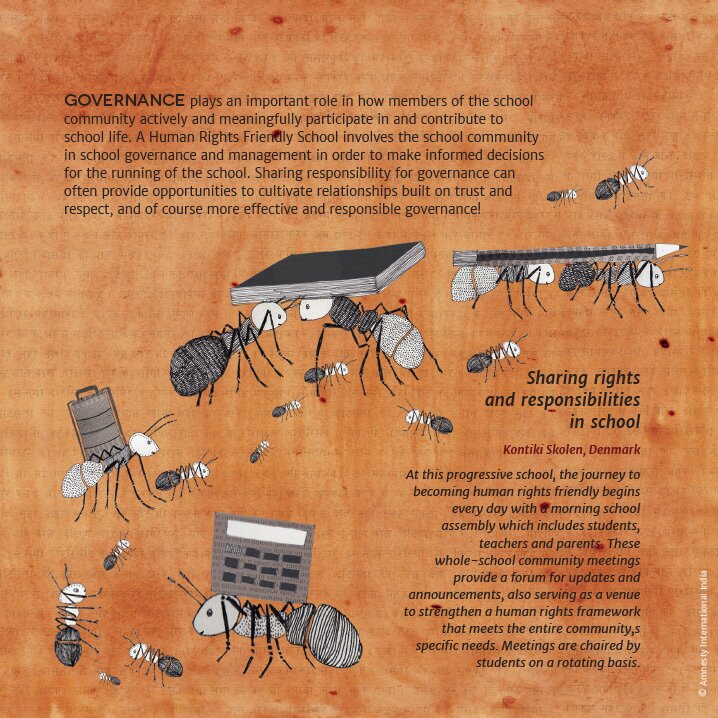


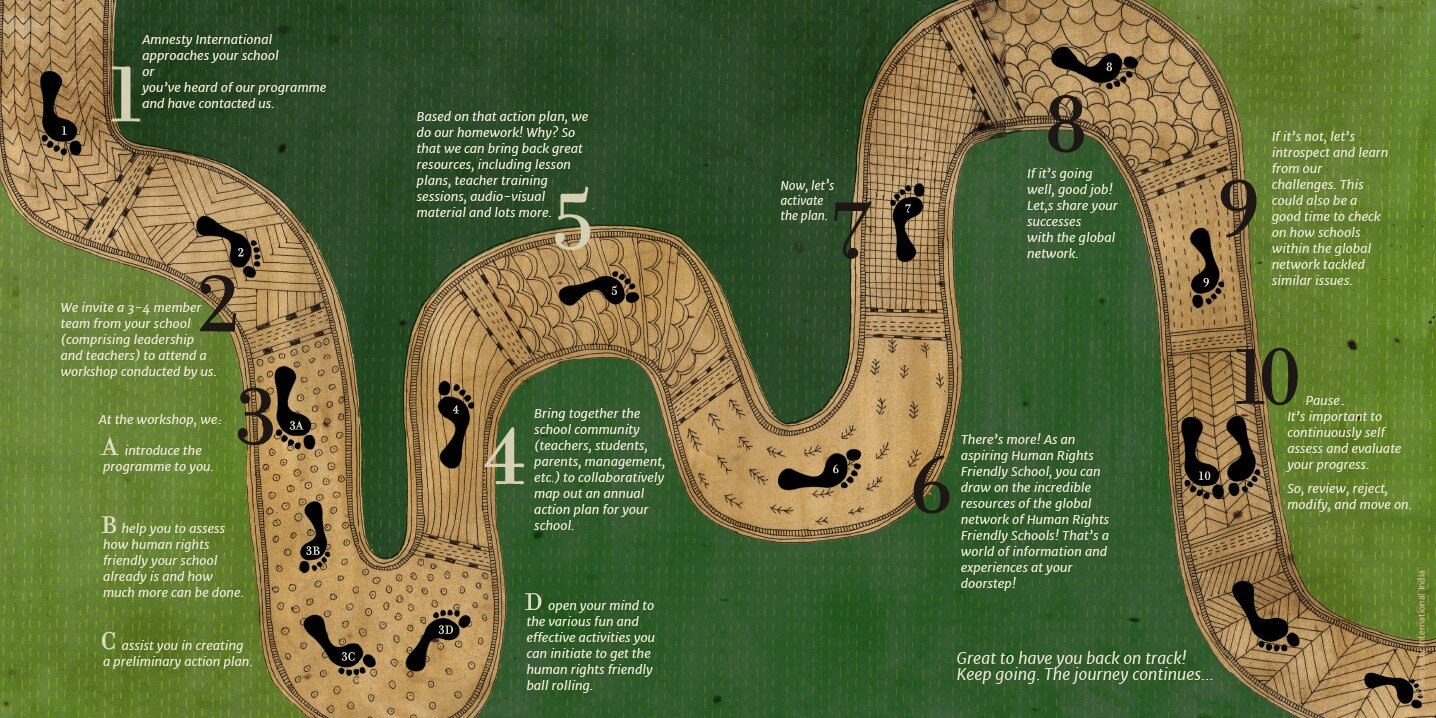

 Leads the Human Rights for Education team in developing the Human Rights Education Programme with schools communities, resource networks and the wider public | BA in Architecture before joining the development sector | MA in Gender and a management degree | Previously worked as Senior Policy Advisor Global Climate and Energy Team for WWF | Lead author of Building an Equitable Green Economy, commissioned as a contribution to the Rio+20 Environment and Development Conference | Previously worked for various development bi-lateral and multi-lateral organisations - researching, assessing, evaluating and training | Enjoys playing tennis, singing/music and doing intricate jigsaw puzzles
Leads the Human Rights for Education team in developing the Human Rights Education Programme with schools communities, resource networks and the wider public | BA in Architecture before joining the development sector | MA in Gender and a management degree | Previously worked as Senior Policy Advisor Global Climate and Energy Team for WWF | Lead author of Building an Equitable Green Economy, commissioned as a contribution to the Rio+20 Environment and Development Conference | Previously worked for various development bi-lateral and multi-lateral organisations - researching, assessing, evaluating and training | Enjoys playing tennis, singing/music and doing intricate jigsaw puzzles Supports schools to integrate human rights education into school life | MA Sociology, MA Elementary Education (currently pursuing) | Previously a teacher-educator for government school teachers across Karnataka covering areas of social studies, teacher professional development and integrating technology into education | Also worked with youth groups on urban governance, youth participation and climate change | Passionate about travel and food
Supports schools to integrate human rights education into school life | MA Sociology, MA Elementary Education (currently pursuing) | Previously a teacher-educator for government school teachers across Karnataka covering areas of social studies, teacher professional development and integrating technology into education | Also worked with youth groups on urban governance, youth participation and climate change | Passionate about travel and food Works on all communication and media-related aspects of the Human Rights for Education programme | BA in Economics and Commerce & PG Diploma in Social Communications Media| Previously worked in advertising and communications, and as a copywriter with Ambience Publicis Advertising | Volunteered as junior communications officer with Pax Christi International in Brussels & worked with CRY - Child Rights and You | Loves music and food (in no particular order)
Works on all communication and media-related aspects of the Human Rights for Education programme | BA in Economics and Commerce & PG Diploma in Social Communications Media| Previously worked in advertising and communications, and as a copywriter with Ambience Publicis Advertising | Volunteered as junior communications officer with Pax Christi International in Brussels & worked with CRY - Child Rights and You | Loves music and food (in no particular order) Somya is programme officer with Amnesty International India. She holds a Master’s degree in social work from the University of Delhi. Her previous work experience with several National and International organizations has strengthened her belief that children can be change makers if they are empowered. She directly works with students, teachers, schools and NGO partners across the country as part of the HRE programme. She comes to work so that she can go back to school and watch children become change makers.
Somya is programme officer with Amnesty International India. She holds a Master’s degree in social work from the University of Delhi. Her previous work experience with several National and International organizations has strengthened her belief that children can be change makers if they are empowered. She directly works with students, teachers, schools and NGO partners across the country as part of the HRE programme. She comes to work so that she can go back to school and watch children become change makers. Coordinates internal communication, documentation, and monitoring and evaluation of HRE’s work in schools | Also conducts training for Telecalling and Face to face teams in Bangalore and Chennai | BA in Journalism from Delhi University | MA in Social Work | Previously worked for a skill development organization | Experience in working with children in juvenile homes/ youth in observation homes | Theatre enthusiast, trekker and music lover.
Coordinates internal communication, documentation, and monitoring and evaluation of HRE’s work in schools | Also conducts training for Telecalling and Face to face teams in Bangalore and Chennai | BA in Journalism from Delhi University | MA in Social Work | Previously worked for a skill development organization | Experience in working with children in juvenile homes/ youth in observation homes | Theatre enthusiast, trekker and music lover.